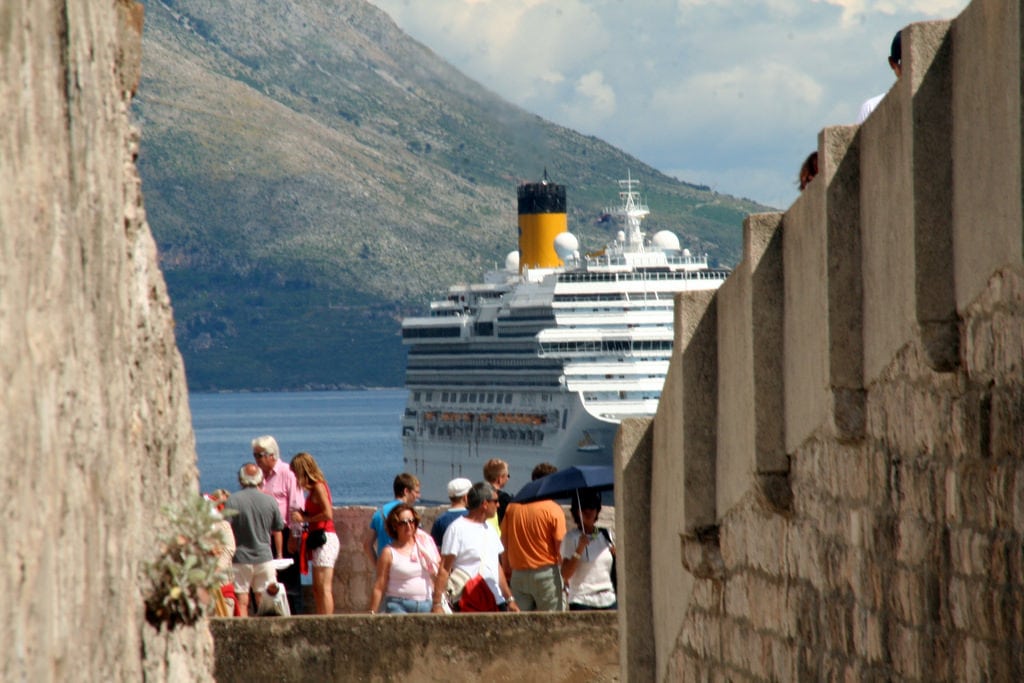Skift Take
We've been talking about overtourism for a while now and it's good to see cities getting more creative when it comes to managing numbers. Visitors are going to keep coming to the likes of Barcelona, Dubrovnik, and Amsterdam, and therefore these places are going to have to get smarter about managing the flow of people, whether they already live there or not.
European cities are slowly starting to come up with strategies to deal with overtourism.
Amsterdam, Barcelona and Dubrovnik occupy their own corners of the continent and are at various stages of their tourism evolution but in recent years all have had to grapple with the concept of too many tourists – or at least too many tourists at certain times.
While each destination has its own set of challenges, there is plenty of common ground.
Dubrovnik, Croatia, is the latest to experience a surge of tourism growth, at least some of which can be attributed to the makers of Game of Thrones using the city as a shooting location.
In 2016, Dubrovnik welcomed 3.4 million overnight tourists, a rise of 13 percent on the prior year. To put that in context, in 1995 at the end of the Croatian War of Independence, there were only 12.9 million tourists arrivals. In 2015, there were 71.6 million.
Part of Dubrovnik’s success had come off the back of the cruise industry, but that brought its own problems.
Speaking on a panel at ITB Berlin last week, Mato Franković, the city’s mayor, said it was crucial not to “become victims of our own success.”
Last year, Dubrovnik received 538 cruise ship calls, a number greater than that of Venice.
These ships tended to visit within a small timeframe, meaning the tiny city was often swamped with cruise passengers.
The growing popularity with cruise companies prompted Franković to start discussions with trade body Cruise Lines International Association to spread out ship arrival dates.
In Barcelona, the volume of people magnifies the problem, and visitors arriving at similar times presents a big dilemma.
Speaking on the same panel, Joan Torrella, tourism director for the city, said that it wasn’t just tourists that posed a problem, but the large numbers of commuters arriving each day.
This underscores a crucial point. It is not necessarily the tourists themselves that are the issues but rather a city’s inability to cope with a significant influx of people.
“The problem is that a lot of people arrive at the same time or at the same place. This is a problem to solve…” Torrella said.
The issue of overtourism has become such a divisive issue in Amsterdam that it is now one of the key debating points in the upcoming city council elections.
Frans van der Avert, CEO of Amsterdam Marketing, said although it was a “young problem,” it had become an “explosive” one.
A 10 percent increase in visitor numbers had made it so that “inhabitants feel that they don’t own their city anymore,” van der Avert said.
Airbnb actively lobbies Amsterdam, which has imposed some strict controls on the number of nights hosts can rent out their properties and recently brought the maximum number down to 30.
Booking.com, is actively soliciting people to place their apartments on its platform for short-term rentals in Amsterdam.
The city has also suspended hotel development and banned large coaches from going into the inner city.
“The way of traveling is changing so rapidly, you have all these platforms, and then you have Airbnb, there’s shared dining, so it’s very hard to keep up with these things. Every day has a new challenge to tackle,” van der Avert said.
Advice for Other Destinations
Part of the reason these three destinations are having to deal with overtourism is because nobody really thought it would be a problem. Countries have always looked to grow numbers without really thinking of the cost. Of course, hindsight is a wonderful thing and nobody really could have foreseen the arrival of Airbnb, but it is still true that few destinations had any form of long-term tourism plan in place.
“We have opened and renovated seven big museums in Amsterdam and we sort of did not realize what the impact would be in the coming years that everyone would come to see the Rijksmuseum and the Van Gogh Museum because they’re wonderful institutions,” Van der Avert said.
Cities require better planning and this often necessitates a cooperation among local entities, something we talked about in Skift’s 2018 Megatrends.
“The tourism industry must be aware that the destination is fragile, that it’s dangerous to destroy it,” Barcelona’s Torrella said.
Cities are learning all the time how to manage flows and understanding that chasing tourism growth for the sake of it isn’t necessarily a good thing. Let’s just hope the next wave of tourism hot spots don’t make the same mistakes.
The Daily Newsletter
Our daily coverage of the global travel industry. Written by editors and analysts from across Skift’s brands.
Have a confidential tip for Skift? Get in touch
Tags: amsterdam, barcelona, croatia, dubrovnik, holland, itb, overtourism, spain, the netherlands
Photo credit: A cruise ship in Dubrovnik. The city is more popular with tourists thanks in part to Game of Thrones. Caccamo / Flickr.com
